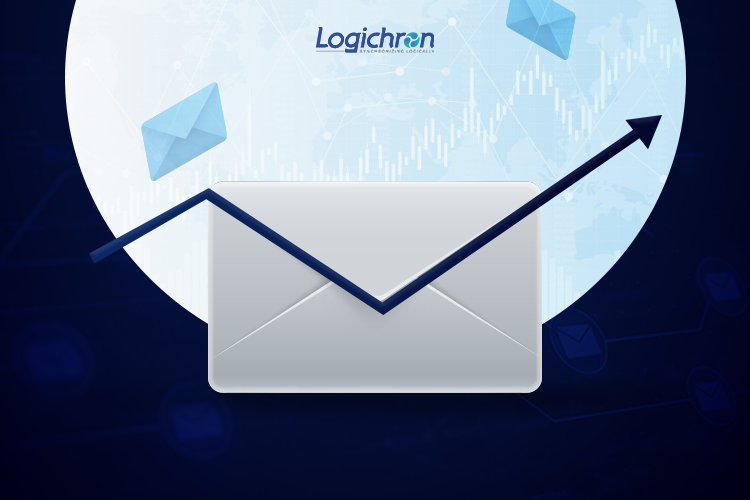As most marketers understand, B2B Marketing is often very different from B2C marketing due to the target audience, the products themselves, and even the tonality permitted while trying to talk about these products. These differences are best observed when Email Marketing of both sides is compared.
Email Marketing is an age-old strategy that aims to utilize the power and versatility of the internet, to not just sell to your customers, but also to build a personal connection with them. If harnessed well, its power can do wonders for your ROI as well as your customer retention numbers; eventually getting a lot of business for you.
Email Marketing today
According to this article by HubSpot, marketing via Email Campaigns is the most efficient in ROI generation, as for every $1 spent in marketing, $38 can be expected in return on an average. So this means, b2b Email Marketing could be the answer to all your prayers.
With ever-increasing internet penetration and ease of access to inexpensive smartphones, more emails are being sent, received, and read daily. The platform is set, and the audience is frequent, as over 290 billion reach inboxes every 24 hours. Underestimating the power of Email Campaigns is one of the most common errors a B2B company could do, in today’s flashy world of social media options and engagement rates.
If you are one such B2B company, better late than never!
Here are our 5 b2b Email Marketing tactics that will help jumpstart your B2B sales.
1. Careful Personalisation
Firstly let’s tackle the question, who’s to be addressed? If you’re mailing en-masse, you either can use an Email Marketing Service Provider(ESP) to automatically add the name of the recipient or you can address them using a generic pronoun such as “You” or a moniker such as “Dear Reader”.
However, while using an ESP based name reader, be careful as many names on the mailing list might not even be legitimate or might be badly spelled. When a message jumps the gun by forcing familiarity too soon, the personalization comes across as skeevy. Intimacy is earned in real life, and it should appear to be the same way with mails. So, while personalizing, carefully approach the naming convention.
2. Trigger Emails
Automated or Trigger Emails are a great mobilizer, as they often have the power and the designs to deeply influence someone.
Besides being used for “Welcome”/ “Thank You”/Order confirmation, Trigger Emails can be used for many other purposes such as customer retention, customer acquisition, and feedback collection.
Generally, three kinds of trigger emails do very well.
a) Activation:
Sending a notification for activation will remind your users about your product.
b) Win-back:
A win-back email in order to renew or extend an existing subscription or customer plans.
c) Surprise:
A small giveaway or a unique coupon.
3. Subject Lines
The subject line is make-or-break for any email campaign. In their extensive research of over 900 million online messages. Adestra found that subject lines fewer than 10 words long had an open rate of 58%. So while an informative 50-60 character long subject line might feel tempting, remember that with subject lines, brevity is the best policy. This was a distinctive feature of Barack Obama’s extremely successful fundraiser campaign.
However, subject lines with 49-70 characters tested to be most beneficial to engage readers in clicking through to the content, according to the same research article.
The end goal comes into question when such an impasse shows itself. Where extremely short subject lines are very helpful to increase engagement, longer ones performed really well to increase click rates. Depending on your end goal – whether you want to increase awareness or boost clicks, apt strategies can be implemented.
4. Mailing List Monitoring
Segmentation of Mailing Lists is extremely important to target the section of the audience which will lead to most conversions. There are no magic wands, and daily, hundreds, if not thousands, of emails land in your spam boxes. Only with proper targeting, you can figure out which audience is actively looking at the stuff you are sending out.
For that, mailing lists need to be modified and cleaned on a daily basis. Proper segmentation would also mean the expenditure can be reduced, as inactive members can be deleted from the list.
Using a CRM with segmentation capabilities, you can divide your readers into these subgroups, and subtly alter your content-
Segmentation by Industry type:
Knowing what your reader’s industry is, could be a very useful bit of information that would help you curate the content. An FMCG brand would be more interested in a newsletter emphasizing nutrition than a software company.
Segmentation by Company Size:
This is sometimes also known as account-based marketing. A small startup might not have enough funds for a foreign conference by industry experts, whereas the industry leaders in a certain circle with many more employees could be much more interested.
Segmentation by Sales Cycle:
Based on the sales cycle your clientele is undergoing the content can be segmented. Early-stage buyers may like a research document or a whitepaper, but people who have already made up their mind regarding buying your product – they would like a freemium or a How-To tutorial video.
5. Focus on designs
The most important thing once someone has opened your email has to be the design of the content. It needs to be striking yet uncluttered, and stylish as well as consistent. Here are some design principles that you should follow in order to make the most of Email Marketing.
-
Mobile-Friendly Design:
According to a Statista report, 43% of inbox access came from Mobile Phones. It seems intuitive that most people use their phones to access their Emails, and this trend is only on the rise. Be sure to make your content optimized for mobile viewing. Use a RED( Responsive Design) template if need be. A 500-650 px wide is perfect.
-
A/B Testing:
A/B Test or the Split Test, is a great tool to understand your audience and finetune your email marketing strategy. When split testing, you create two versions (called variants) of an email to determine which one statistically performs better. Once you find which variant performs best, you can update your strategy based on what you learned about the winner.
-
Less than 3 Typefaces:
As most newsletters are text-heavy, try to keep your text formatting as cohesive as possible. According to a Hubspot article, a newsletter with more than 3 typefaces is often off-putting.
A New Way Forward
Hence this is clear that although b2b Email campaigns are very rewarding, the attention to detail required and the meticulous strategizing needed are very important. It can’t just be just any other email.
However that being said, B2B email marketing is absolutely essential for your firm to excel in customer acquisition and customer retention. But as they need to be specialized and extremely well-planned, you might as well want professional experts handling your Email campaigns such as Logichron, a one-stop solution for all your B2B digital marketing needs.




